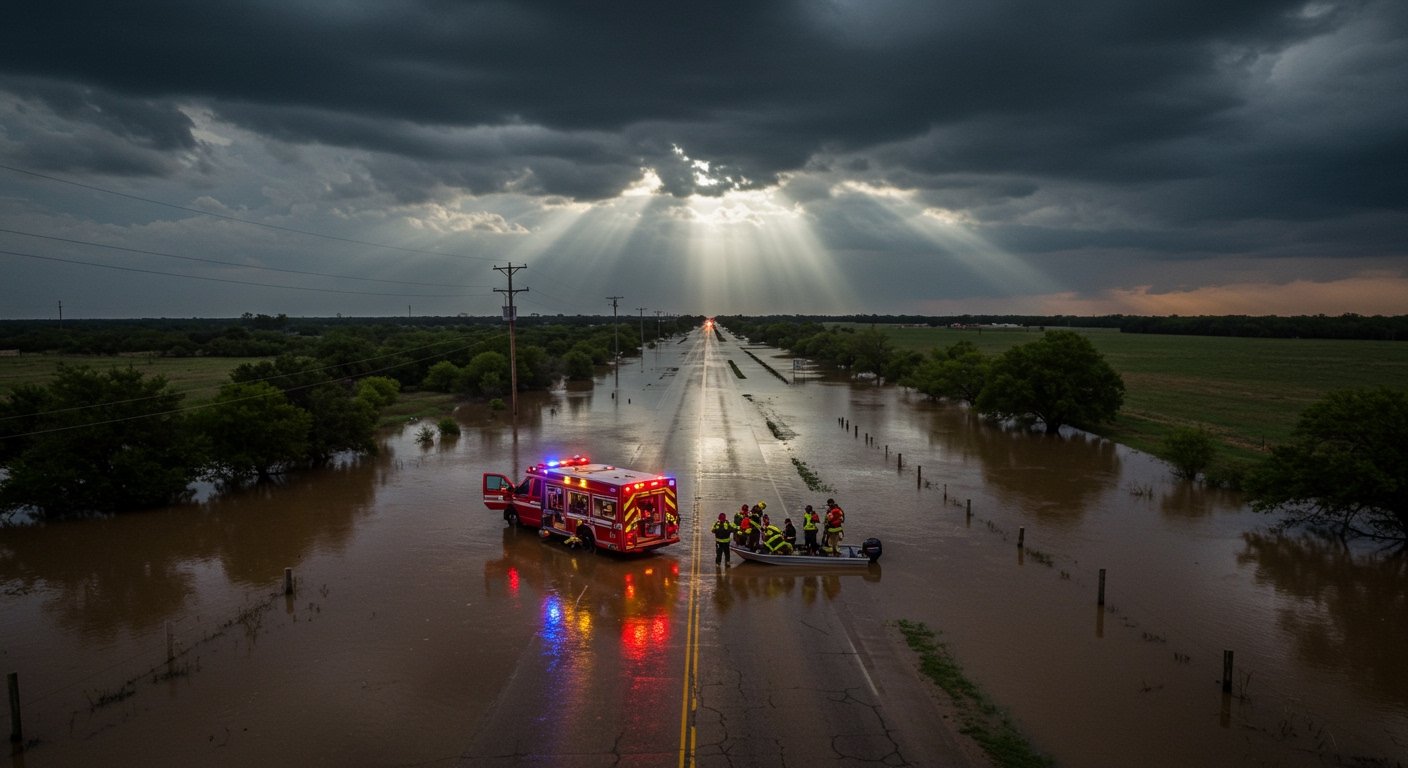AUSTIN, Texas – Governor Greg Abbott on May 28, 2025, formally renewed and amended a State of Disaster Proclamation for Texas, citing ongoing severe storms and widespread flooding that continue to impact communities across the state. The action underscores the persistent threat posed by recent extreme weather events and authorizes the comprehensive deployment of state resources to address their consequences.
Background to the Proclamation
The original disaster declaration was initially issued on March 29, 2025, following a significant severe weather event that commenced on March 27, 2025. That initial wave of storms primarily affected the Gulf Coast region, specifically targeting Cameron, Hidalgo, Starr, and Willacy counties. The initial impacts were severe, characterized by heavy rainfall, dangerous flash flooding, and hazardous wind gusts. These conditions led to widespread damage, numerous injuries, and tragically, the loss of life in the affected areas.
Expanding the Scope of Assistance
The renewal and amendment signed by Governor Abbott dramatically expands the geographic scope of the disaster declaration. This crucial update acknowledges that the severe weather threat and its repercussions have spread far beyond the initial impact zone, now encompassing a vast majority of Texas counties. The expanded proclamation now includes: Aransas, Atascosa, Bandera, Bastrop, Bee, Bell, Bexar, Blanco, Brewster, Burleson, Burnet, Caldwell, Calhoun, Childress, Clay, Collingsworth, Colorado, Comal, Culberson, DeWitt, Dimmit, Donley, Duval, Edwards, El Paso, Foard, Franklin, Frio, Gillespie, Goliad, Gonzales, Grayson, Guadalupe, Hall, Hardeman, Hays, Hudspeth, Jeff Davis, Jim Wells, Karnes, Kendall, Kerr, Kimble, Kinney, Kleberg, Lampasas, La Salle, Lavaca, Live Oak, Llano, Loving, Lubbock, Mason, Matagorda, Maverick, McCullough, McMullen, Medina, Menard, Midland, Mitchell, Montgomery, Nueces, Pecos, Presidio, Real, Reeves, San Patricio, San Saba, Scurry, Sutton, Terrell, Travis, Uvalde, Val Verde, Victoria, Ward, Washington, Webb, Wharton, Wichita, Williamson, Wilson, Zapata and Zavala Counties.
This extensive list highlights the statewide nature of the ongoing severe weather threat and the cumulative impact of storms over the past two months. By adding these counties, the state government is signaling the need for enhanced support and coordination in areas experiencing or at risk from flooding and severe weather effects.
Legal Authority and State Response
The Governor’s action is taken in strict accordance with the powers granted under Section 418.014 of the Texas Government Code. This statute provides the legal framework for the Governor to declare a state of disaster when conditions warrant, thereby activating the state’s emergency management plan and enabling specific governmental actions. The renewed proclamation was formally attested to by Secretary of State Jane Nelson, ensuring its official status and implementation.
A key consequence of this renewed declaration is the authorization for the use of all available state and political subdivision resources necessary to cope with the disaster. This authority, outlined in Section 418.017 of the Texas Government Code, mobilizes state agencies, local governments, and emergency responders, allowing for coordinated efforts in search and rescue, debris removal, sheltering, and other vital response activities. It ensures that resources can be directed efficiently to the areas most in need across the now 88 affected counties.
Furthermore, the proclamation invokes the provisions of Section 418.016 of the Texas Government Code, which permits the temporary suspension of certain regulatory statutes or rules. This measure is intended to streamline emergency response efforts by removing potential bureaucratic impediments. However, any such suspension requires the explicit written approval of the Office of the Governor, providing an important layer of oversight.
Ongoing Challenges and Future Outlook
The decision to renew the disaster declaration reflects the reality that Texas continues to face significant challenges from persistent severe weather patterns. While initial impacts in March caused immediate damage, subsequent storm systems throughout April and May have exacerbated flooding risks, strained infrastructure, and posed ongoing threats to public safety across a much larger geographical footprint. The inclusion of counties stretching from the Gulf Coast to West Texas, and from the Panhandle down to the border region, underscores the geographically diverse nature of the current threat.
The renewed declaration is a critical administrative step that unlocks resources and provides operational flexibility for state and local officials. It does not immediately qualify affected individuals or areas for federal assistance like FEMA aid; that process typically requires a separate federal disaster declaration, which is often requested by the state after a gubernatorial declaration is in place and preliminary damage assessments are completed. However, the state declaration is a necessary prerequisite for many forms of state-level aid and sets the stage for potential federal support.
State emergency management officials, working in conjunction with county and local authorities, will continue to monitor conditions, conduct damage assessments, and coordinate response efforts under the authority of this renewed proclamation. Residents in the listed counties are urged to remain vigilant and heed warnings from local officials as the state navigates the ongoing severe weather season.






